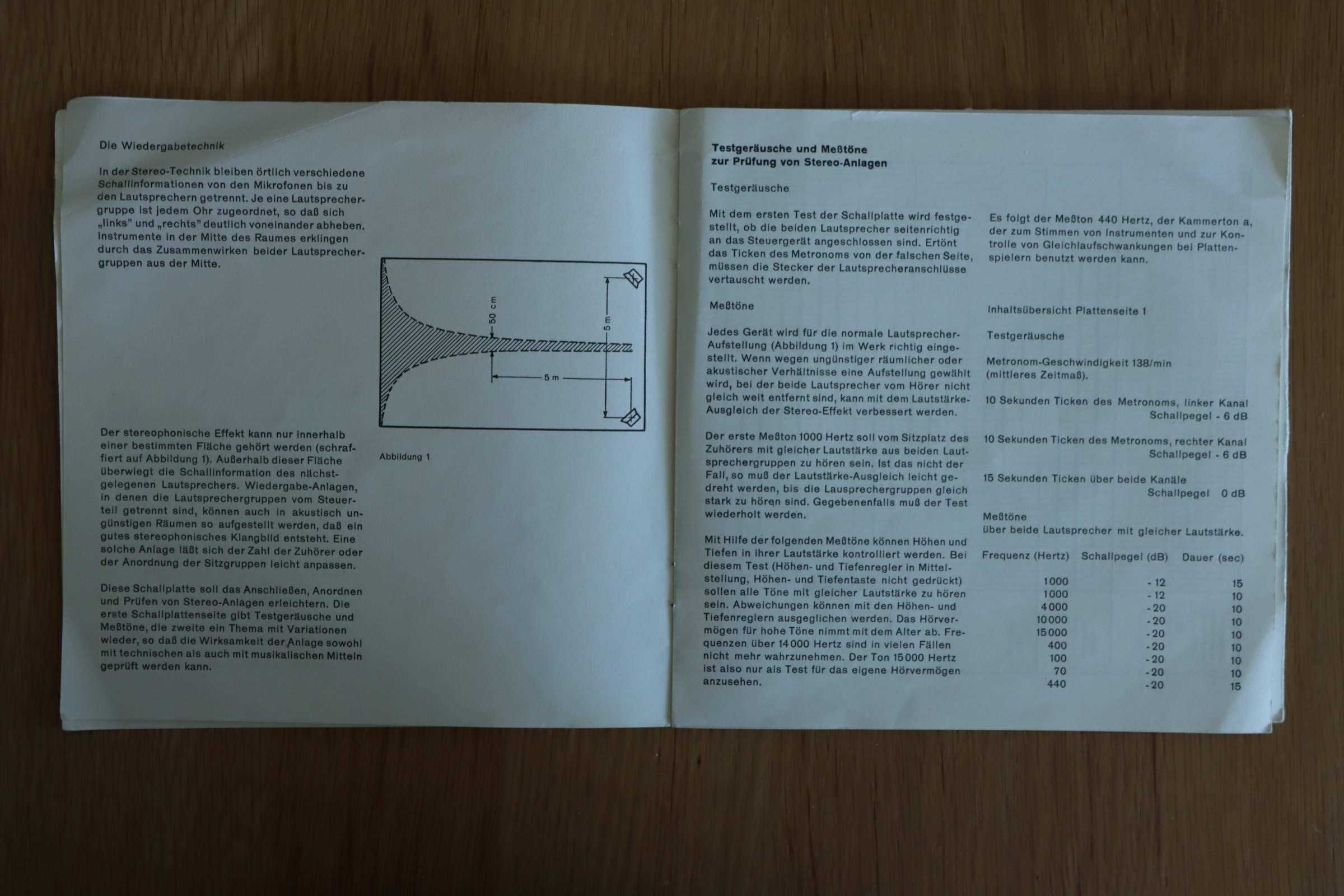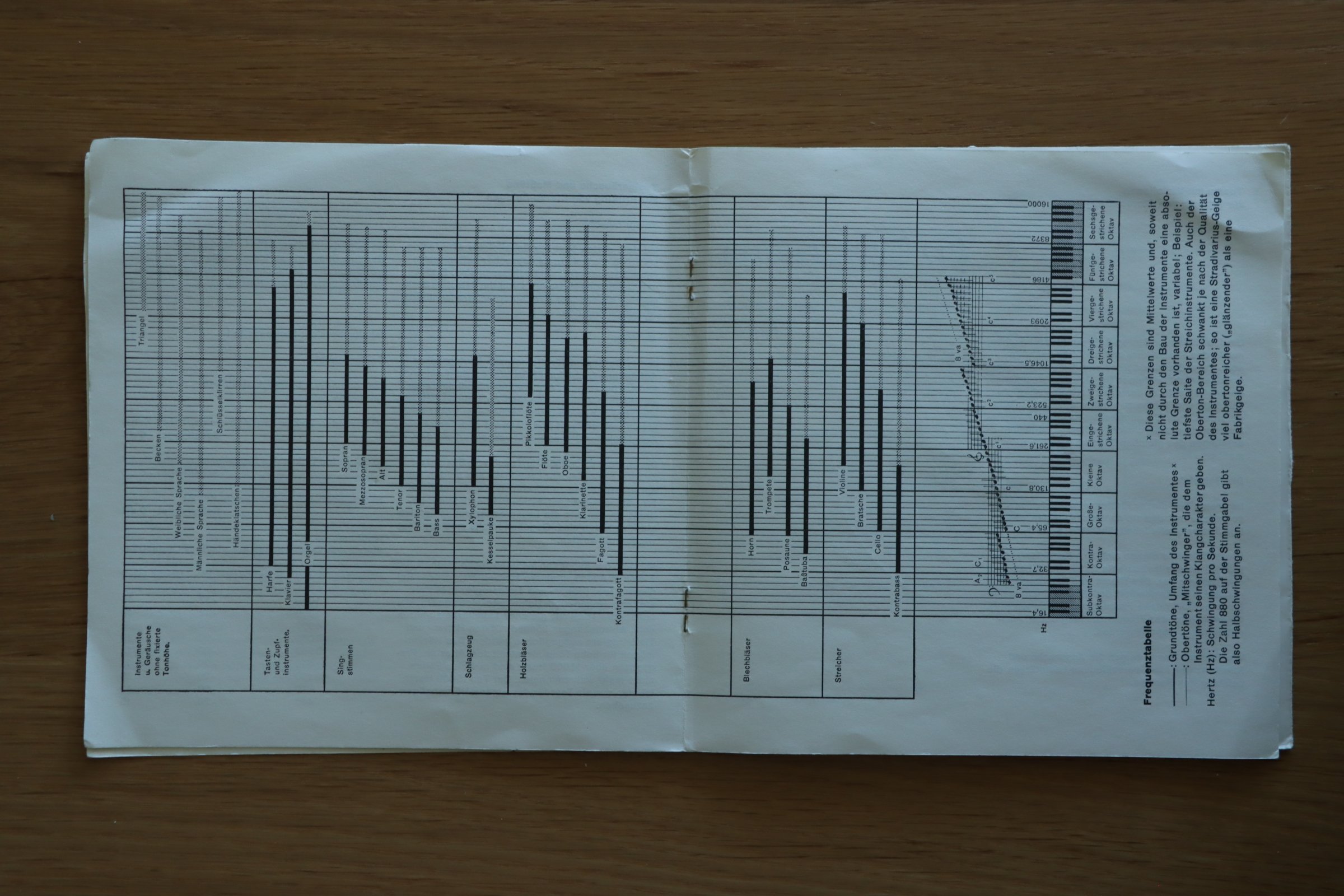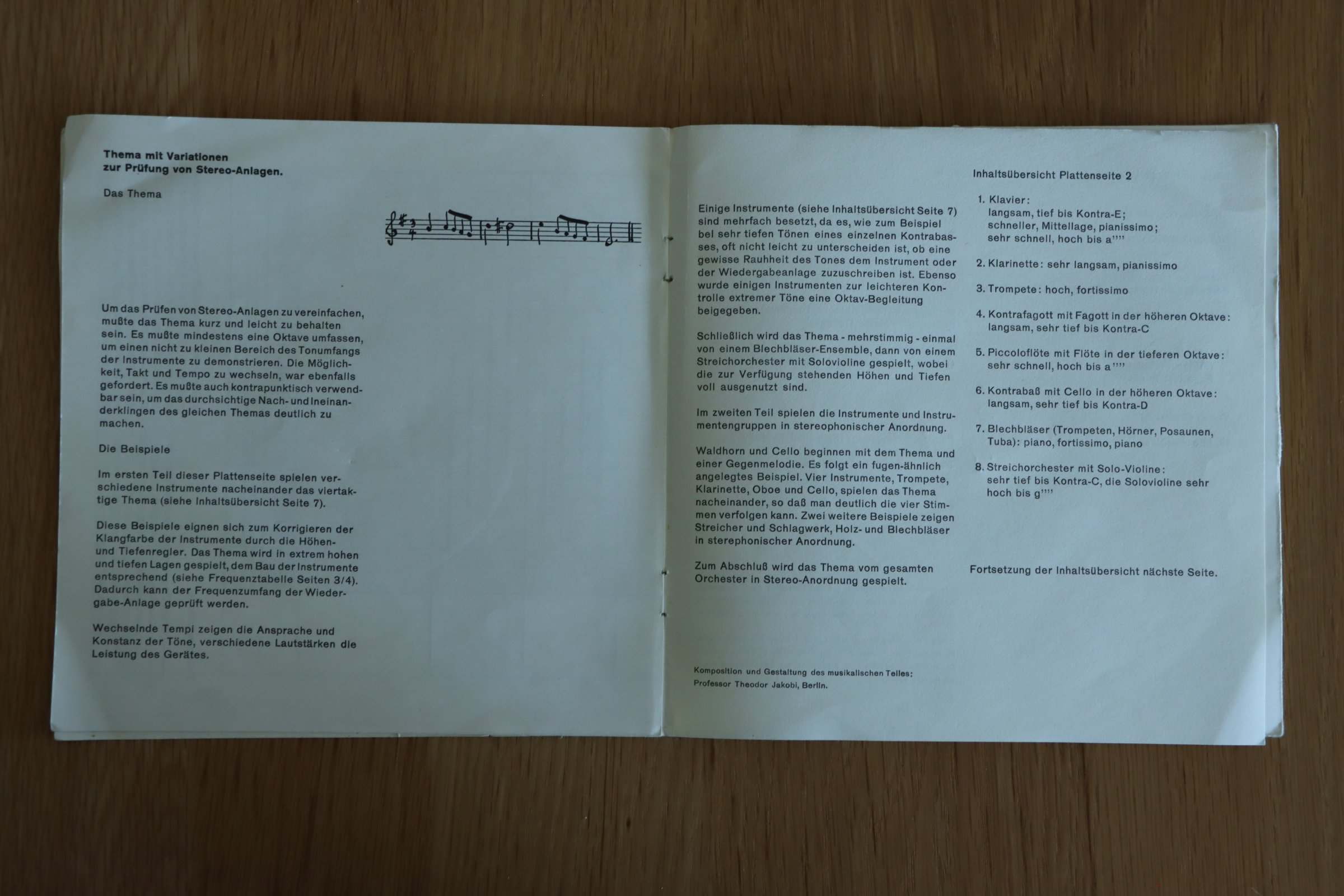Braun's A2 Prufplatte
Translated from booklet text:
To simplify testing stereo systems, the theme had to be short and easy to remember. It had to span at least an octave to demonstrate a not-too-small range of the instruments' tonal range. The ability to change time signature and tempo was also required. It also had to be usable contrapuntally to clearly emphasize the transparent reverberation and interplay of the same theme.
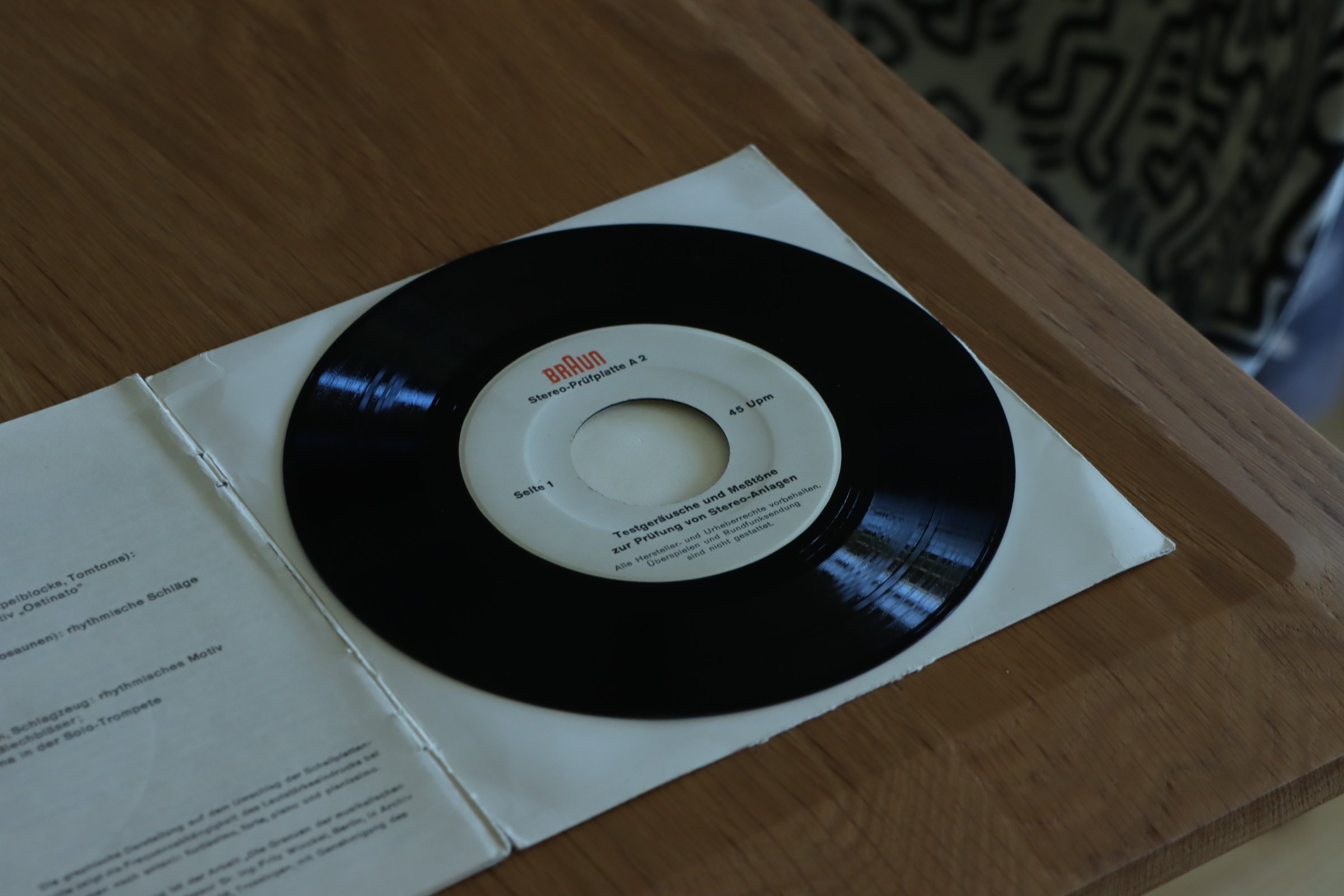
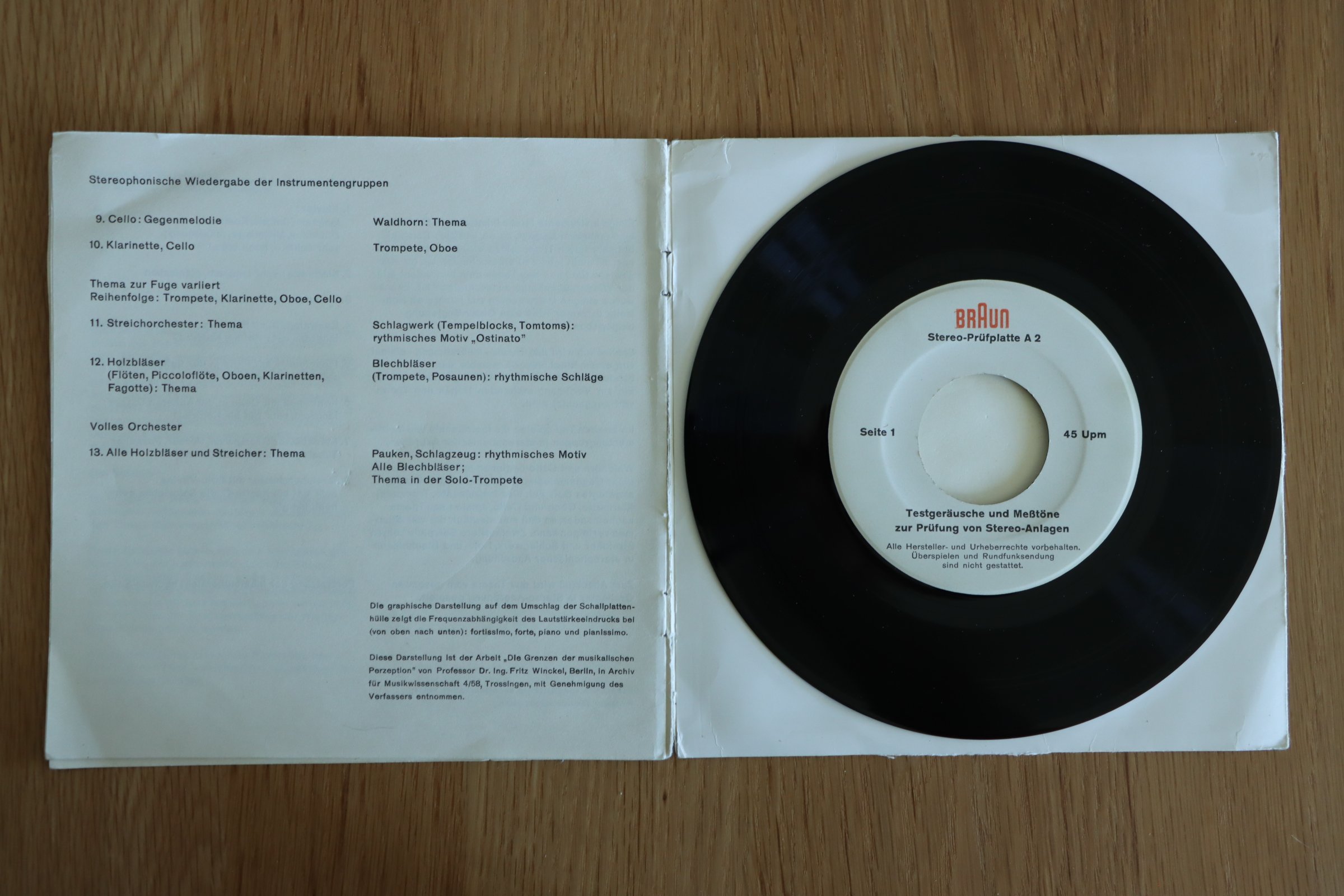
The Examples
In the first part of this record side, various instruments play the four-bar theme one after the other (see table of contents on page 7).
These examples are suitable for correcting the timbre of the instruments using the treble and bass controls. The theme is played in extremely high and low registers, depending on the construction of the instruments (see frequency table on pages 3/4). This allows the frequency range of the playback system to be tested.
Varying tempos demonstrate the response and consistency of the tones, while different volumes reflect the performance of the instrument.
Table of Contents, Side 2
1. Piano: slow, low to double E; faster, middle range, pianissimo; very fast, high to A
Some instruments (see table of contents, page 7) are multi-instrumentalized, since, for example, with very low notes from a single double bass, it is often difficult to distinguish whether a certain roughness of the tone is due to the instrument or the playback system. Likewise, some instruments have been given an octave accompaniment to facilitate control of extreme tones.
2. Clarinet: very slow, pianissimo
3. Trumpet: high, fortissimo
4. Contrabassoon with bassoon in the higher octave: slow, very low to double C
Finally, the theme is played polyphonically, first by a brass ensemble, then by a string orchestra with solo violin, making full use of the available high and low ranges.
5. Piccolo with flute in the lower octave: very fast, high to A
6. Double bass with cello in the higher octave: slow, very low to double D
In the second part, the instruments and instrument groups play in stereophonic arrangement.
7. Brass (trumpets, horns, trombones, tuba): piano, fortissimo, piano
The horn and cello begin with the theme and a countermelody. A fugue-like example follows. Four instruments—trumpet, clarinet, oboe, and cello—play the theme one after the other, so that the four parts can be clearly followed. Two further examples show strings and percussion, woodwinds, and brass in stereophonic arrangement.
8. String orchestra with solo violin: very low to double C, solo violin very high to G.
Continuation of the table of contents on the next page.
Finally, the theme is played by the entire orchestra in stereo arrangement.
Composition. Host of the musical composition: Professor Theodor Jakob, Berlin
